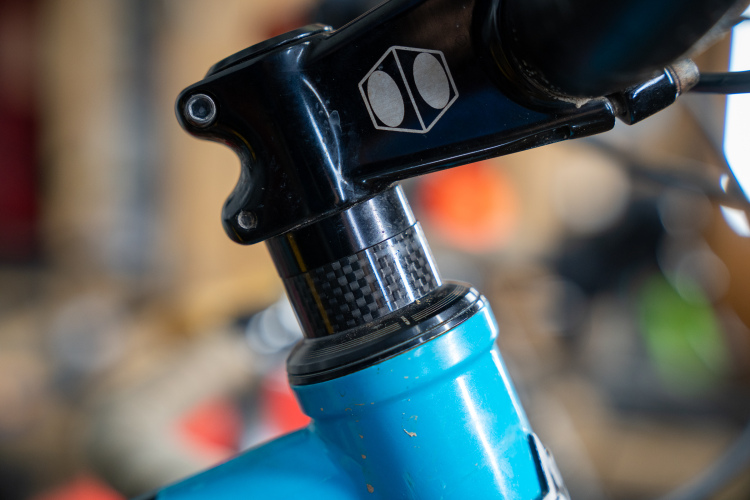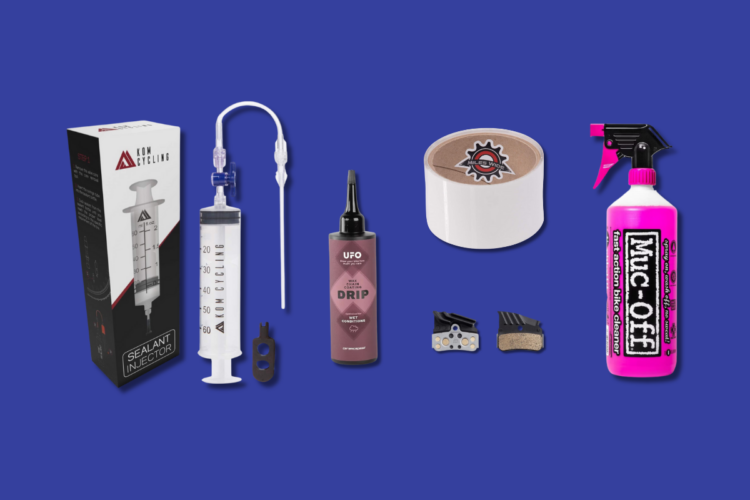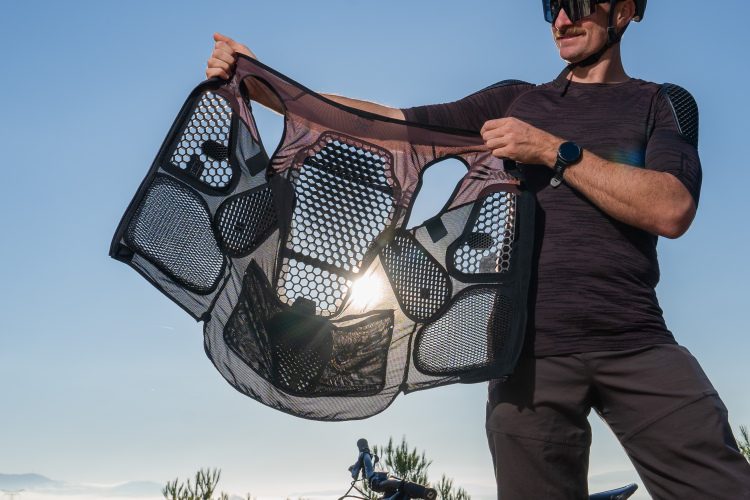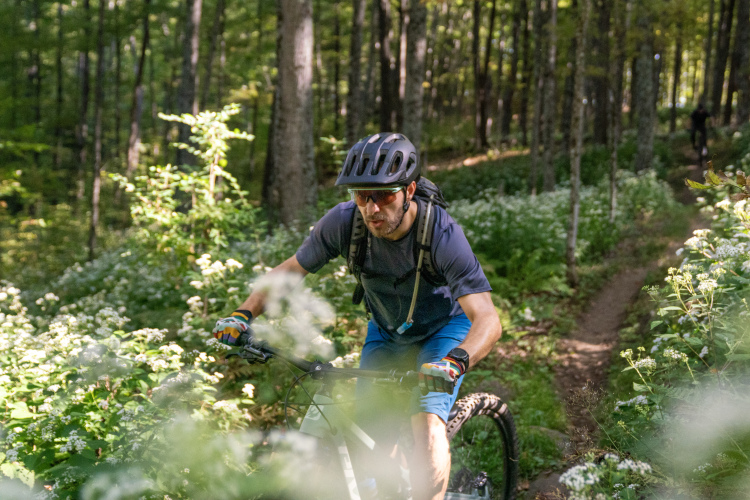
Mountain biking is expensive. Really expensive. Whereas widespread sports like soccer, football, hockey, and baseball generally require a $10 ball and some equipment, mountain bikers are immediately faced with at least a $450 charge for their bike. Adding in about $75 for a bare-bones set of riding gear and another $45 for a car rack, new riders and veterans alike can feel like they are being drowned in a pool of expenses. I haven’t even mentioned bike maintenance or tools yet.
On the bright side, there are many ways to save money on mountain biking. Carpooling to the trail, searching online deals, and making your own trail snacks will all help keep some of your hard-earned cash in your pocket where it belongs. However, not every way to save takes the form of nifty hacks, scouring the internet, and coordinating with friends. Here is a list of 6 ordinary items riders probably already own that can double for mountain biking duty.
Athletic Shirts

Mountain bikers love their clothes. But in addition to making us look cool and including high-tech fabrics to wick away moisture, mountain bike-specific garments are often at a price point that can make riders sweat. Fifty dollars is the staring point for most bike jerseys, and prices can quickly go up from there.
On the other hand, department stores carry dependable athletic shirts from brands like Russell, Hanes, and Champion for around $10. Although they won’t have the greatest sports clothing technology, fit, and fashion, they’ll keep riders cool enough during those hot summer rides.
Sunglasses

I still don’t understand why so many mountain bikers wear remarkably expensive sunglasses. Buying a pair of shades from a well-known brand can easily cost almost $250. What do mountain bike-specific sunglasses really provide that regular sports sunglasses don’t? Are those features worth the price? Think of all the other ways that money could be spent! A brand new mid-range fork could be purchased for that price.

For free, riders can enjoy a fine pair of scratch-resistant sunglasses, safety glasses, even fashion sunglasses by rooting through seldom-opened drawers at home. It’s no big deal if they get lost or broken, either; all you have to do is grab another pair. Even with a much more modest price tag, they will still shield eyes from the sun and protect from errant branches and dirt.
Hiking/skate shoes

So far, everything on this list relates to MTB apparel. That’s due to the reality that we are constantly confronted by a choice when we shop for clothes: do we buy the designer brands or just some good old Levi’s or Hanes? That dilemma applies to all articles of clothing, and shoes are no different.
Hiking boots can be a good choice for mountain biking. The stiff soles are well-suited to pedaling, and grippy, rugged treads grip make them hike-a-bike-worthy. I’ve been wearing a pair of Merrel’s Moab boots for years now, and they remain planted on my Crankbrothers 50/50 pedals even in the worst Wisconsin spring slop.
A pair of skate shoes can work with flat pedals as well.
Toothbrush

Not surprisingly, toothbrushes can effectively clean other things besides teeth. Nowhere is this more true than with mountain bikes, which have nooks and crannies that are almost impossible to reach without taking apart the whole bike. Thanks to their incredibly stiff bristles, a toothbrush is effective against the mud spots that become ingrained in bike frames.
And for such a small item, you can easily rake in some pretty big savings. For example, the cost of a dedicated wash kit that runs around $30 can be completely avoiding by combining a toothbrush with soapy water and some paper towels. Furthermore, if you happen to have two toothbrushes laying around, you can tape them together to make a formidable chain cleaner.
Ziploc bags

Ziploc bags offer a cheap alternative to more expensive sealing and organizing systems used in hydration packs and frame bags. For example, instead of shelling out for a tool roll, a few Ziploc bags can be used to sorts tools into categories. Label each bag with some masking tape, and you’ve got yourself a free, effective system for finding things in your backpack. Similarly, using Ziploc bag are great for storing water-sensitive items like phones, wallets, and cameras. That way you can avoid shelling out for one of these.
Zip ties

The last entry on this list, zip ties, certainly isn’t the least. Zip ties can be used to true wheels, secure brake lines, check sag, secure cables, double as straps for a bike rack, hold things on frames, secure race plates, tidy up your cockpit, etc. I’ve even seen pictures of zip ties and Duct tape holding a broken seat tube together after a particularly nasty crash. Simply put, there is no limit to what one can do with zip ties, and they can substitute for expensive items like truing stands, housing holders, and straps.
It’s worth noting that zip ties’ truly pedestrian sibling, the twist tie, is also a useful item for securing things to your frame or backpack. And unlike zip ties, they’re re-usable! That said, not all twist ties are created equally. Some are more flimsy than others, so start collecting good ones when you come across them.
Your turn: What common items do you use for mountain biking to save money? Share in the comments below!











4 Comments
Jan 19, 2019
Jul 19, 2019
Aug 7, 2018
Aug 9, 2018
I can't imagine riding trails with tubes in my tires again, but a dedicated tubeless set up can cost significant coin. I've not done this but at one point, there was a lot of forum talk about riders making their own sealant. As well, lots of riders use Gorilla brand tape for tubeless set ups (instead of paying $$ for a single wheelset's worth of the harder plastic tape). Does it last as long as the LBS bought tape?
*Speaking of which: The stiff plastic "tubeless-specific" rim tape is already available as another product, and is just rebranded for bike brands, yes? If so, can anyone say with some certainty what other form it is sold as (hopefully in bulk)? 3M or someone else?
3M Mastic tape: It's ~$20 per roll but it goes a long way. I've built cobbled several trail worthy bikes together for friends and family, and my role is less than 1/2 used up after making at least a dozen custom chainstay protectors out of it. Some use it for crank arm protection, downtube protection, etc. it's really sticky and just thick and fluffy(?) enough to dampen noise from chain slap or pebbles fired up from the front tire. It'd make a great second skin for commuter bikes that get banged around in public racks. I can see potential for it on auto or garage wall racks too.
Plastic 3-ring binders: With the world going paperless, 3-ring binders are filling landfills (or hopefully being recycled) in massive quantities. I've salvaged a few of the floppy plastic ones and trimmed out mudguards (an easy task that is well documented online), helmet visors, and partial or full shoe inserts that I used below the insole to take up space, stiffen a sole, or smooth over Shimano's poorly designed footbed (great shoes but what's up with the lack of padding over the internal cleat plate?). DIY bagmakers could put it to use as a way to stiffen up bags without the additional buik of foam.